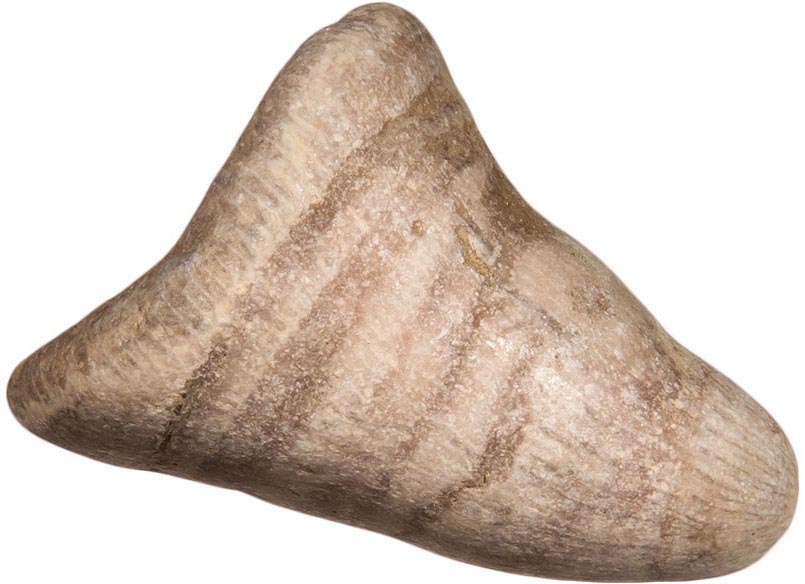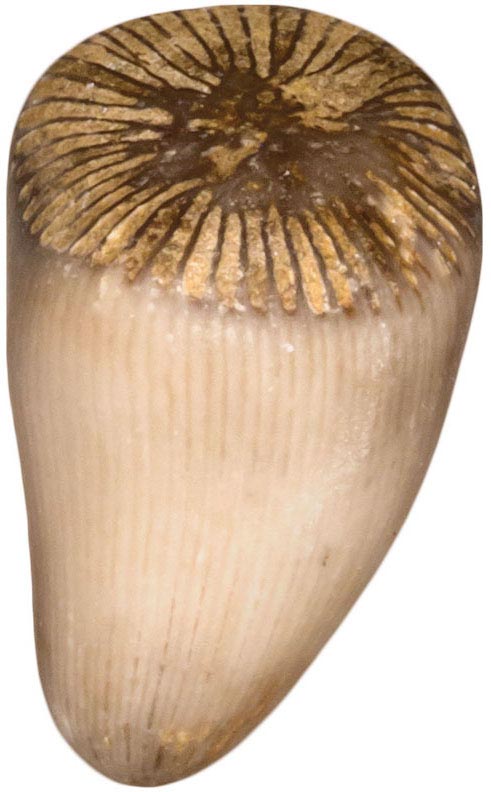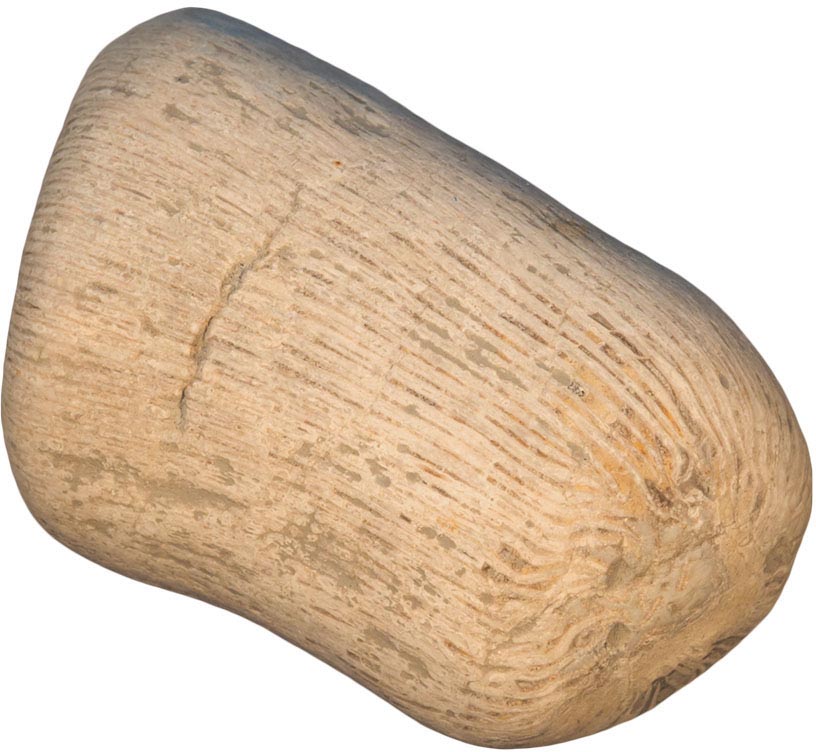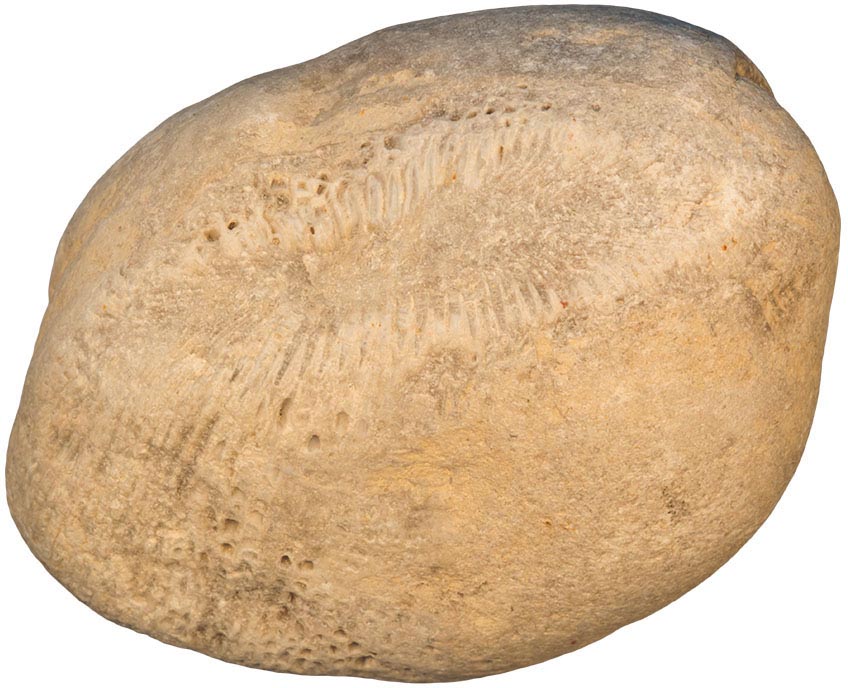
The Devonian seas saw a dramatic increase in marine life, and reefs from the period were home to many species, dozens of which can be found in the Traverse Group’s rocks. It may require some in-depth research to definitively identify any of them, but arriving at a ballpark identification isn’t generally very difficult.
Solitary rugose corals, particularly those we call horn coral, were related to Hexagonaria corals but did not live in colonies, instead forming solitary tube-like structures. These “horns” are generally simple to identify, as their elongated, often curved shape is distinctive. In addition, their corallites are usually wider than those found in Hexagonaria fossils. Horn corals also sometimes boast gauze- or fabric-like textures or ring-like bands of color.
Horn corals are typically found loose but may be embedded in limestone as well; even within rock, their size and shape make them easy to identify.


These are all examples of horn coral from the Petoskey region.
Specimen courtesy of Dean Montour



A large horn coral still embedded in limestone